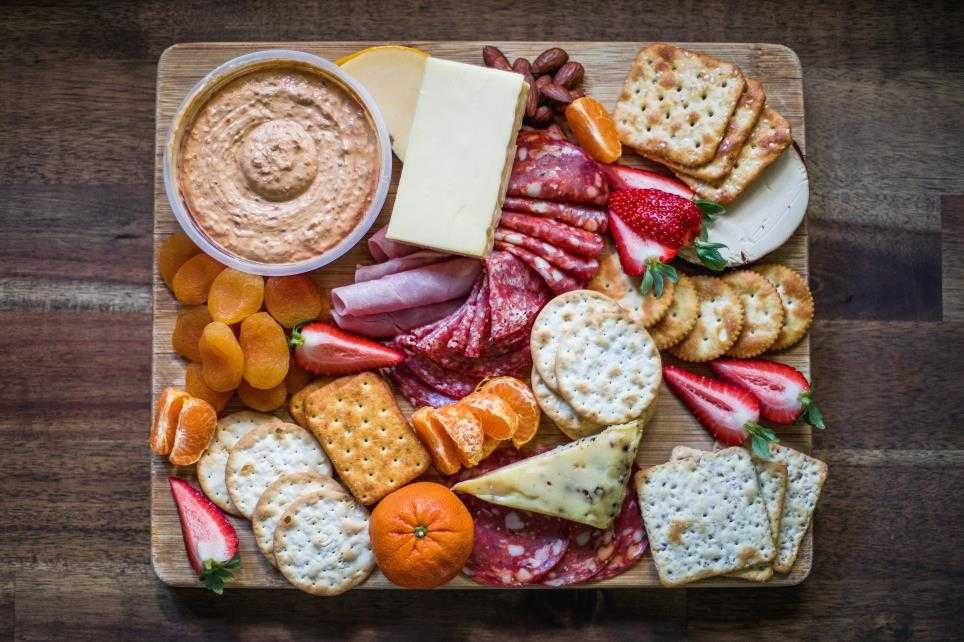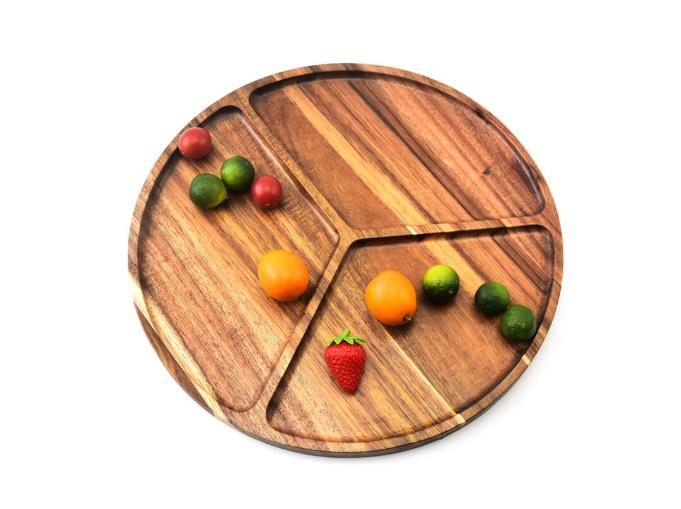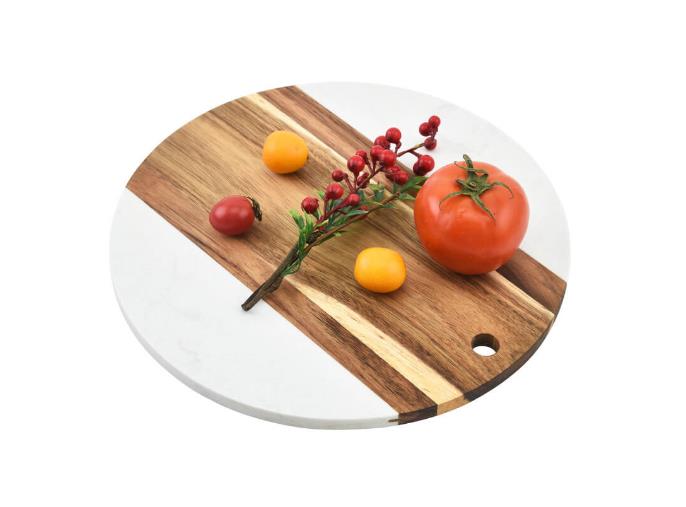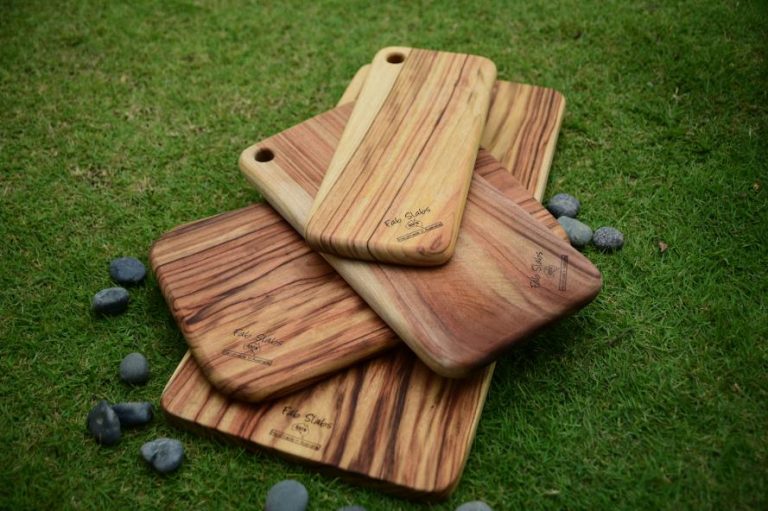From fancy restaurants to simple get-togethers, charcuterie boards seem to be everywhere these days.
A wide variety of good foods served simply, but in a way that’s incredibly attractive to look at is a winning combination. That’s why a charcuterie board is an essential purchase for anyone looking for a centerpiece the next time they’re hosting. It’s a smart way to sit down with and serve appetizers with their loved ones, or for restaurants looking to wow their customers in new and interesting ways.
What is charcuterie?
Charcuterie dates back hundreds of years, into the depths of Renaissance France. It was originally a term for high-end meat products, mostly pork, that were prepared by a master butcher and served at noble dinner parties. (The term is normally translated to something like “delicatessen,” but literally means pork-butcher shops.)
But now, the term has grown to encompass any meat that is prepared and served in a certain manner, alongside all of the accompaniments that go along with it like cheeses, olives, fruit, nuts, and crackers.
What is a charcuterie board?

Charcuterie should always be served on a special board, typically made of specially treated and prepared hardwood, called, unsurprisingly, a charcuterie board.
A wooden charcuterie board is only ever used for serving food, and should never be used in the preparation of the meal. This style of board is generally made from wood that’s more susceptible to damage than things like cutting boards, chosen more for appearance and style rather than utility and toughness.
Choosing a material for your charcuterie board
At LeeKnives, our charcuterie boards are created with modern needs in mind. When making your choice, there are several things you should be considering, which include:
Aesthetics and presentation
The primary purpose of a charcuterie board is as an attractive place to serve up a variety of appetizers. It’s going to draw the eye, act as a talking point, and be something that your guests will remember and tell friends and family about.
Like many things in life, simplicity reigns supreme when it comes to making your choice. Excess flair and detail are only going to draw the eye away from the food served atop the board.
It’s far better to choose a simple board made from quality wood, which will look much better in multiple situations and can be used on almost any table, sideboard, or kitchen top without issue. Quality materials, whether wood or stone, go a long way, perhaps with a single piece of ornamentation.
Excess decoration tends to look gaudy. Instead, it’s far better to invest money in a board that’s made of high-quality material that will always look good.
Size and dimensions
Charcuterie boards can come in a wide variety of shapes and sizes, but most do tend towards a standard. The average size of a charcuterie board is around 13 inches long and 8 to 9 inches wide.
A board this size provides enough space for food suited for four to six people. Larger boards sized up to 15 inches or longer, can accommodate eight or more diners.

Average-sized boards are the best sellers for a reason. It’s better to focus on a smaller board of higher quality, as bigger is not always better. A charcuterie board doesn’t need to be overloaded to fulfill its purpose. A basic board that has been thoughtfully filled with quality foods it much better than a huge board that’s sparsely filled and badly set up.
Maintenance and cleanliness
Keeping the wood of a charcuterie board in good condition is generally relatively simple, only requiring minimal maintenance, but that doesn’t mean that there aren’t several considerations to take into account.
Firstly, the type of wood that the board is made from can have a significant impact. Softer woods with a wide grain might have a distinctive, distinguished look, but they also require more work to be easy to clean, as a porous wood allows more food residue and juices to sink into it.
Secondly, while a softer wood might sound like it’s prone to damage, remember that no knives or other metallic kitchen implements should ever come into contact with the board itself.
Thirdly, many boards are made with accent pieces, of another type of wood, or stone, or metal. This requires separate care for the wooden sections, especially if it’s a porous stone like marble.
Finally, some types of wood, for example, maple, have innate antibacterial properties which can help keep the board clean and fresh. While this isn’t essential, it makes clean-up simpler and is a defined and clear selling point for many customers.
Buy Wholesale Charcuterie Board and Start Scaling up with Us Today
Contact us and connect with a sales rep to get a free quote.
Materials: What are the best woods for a charcuterie board?
The vast majority of charcuterie boards are wooden, but boards can be made from a wide variety of different woods.
In general, the woods chosen lean towards aesthetics, as other aspects like resilience to damage and the ability to hold a finish are less important. Common wood options include:
Acacia

Acacia is a large, diverse genus that holds almost 1000 types of tree, found generally throughout South East Asia and Australasia, which means that the properties of acacia wood can vary wildly.
However, most acacia follows the general pattern of a moderate-density wood that sits at medium to high hardness. The wood itself is pleasing to look at, generally running towards the darker end of the scale with a large, ringed grain.
Acacia is also naturally water resistant, has antibacterial and antifungal properties, cleans well, and doesn’t transmit heat easily. All of this adds together to produce a wood that’s perfect for food service items like charcuterie boards.
Finally, you should always be careful when buying acacia kitchenware. Many manufacturers freely label their products as being made with acacia, when they’re actually made using a related but inferior genus, generally because the wood is cheaper. Make sure to only purchase from reputable retailers that buy their materials from regulated sources.
Acacia is the main wood used by LeeKnives for our charcuterie boards, because of the superior balance of cost, performance, and aesthetics.
Pros
- Beautiful, distinctive wood
- Water-resistant
- Durable and tough
- Generally reasonably priced
Cons
- Acacia is a general term for a lot of wood types, so it can be hard to know what you’re buying
- Can crack or warp if left wet
Maple

Maple is one of the most popular woods for furniture and kitchenware because it features an excellent balance of price, simplicity of working with, ease of use, and availability.
Firstly, it’s important to establish that maple is an incredibly broad term for over 100 varieties of tree, each of which is its own wood. That means maple woods can shift wildly in appearance and finish, and also in performance and toughness. (Maple can vary from as low as 800 to above 1400 on the Janka toughness index.) Pale and beautiful, maple generally has a fine, even grain and takes staining and finishes incredibly well, so is very suited to decorative items like charcuterie boards.
Maple can broadly be divided into hard and soft varieties. Even the softest maple is suitable for use in charcuterie, because the main negative aspect of the variety; susceptibility to knife damage and wear, is far less of an issue. However, maple does need to be treated and sealed if it’s regularly used with food, so do be aware of that.
Pros
- Widely available and reasonably priced
- Antimicrobial, food and allergy safe
- Looks great, takes gorgeous finishes
- Relatively simple to maintain
Cons
- Requires regular treatment to stay in peak condition
- Susceptibility to insects and perishing
Teak
Teak is widely regarded as one of the most valuable woods on the planet, and it’s regularly used for high-end furniture, decorative items, and kitchenware.
The beautiful golden brown hue and close grain of teak is only one of the reasons the wood is so highly valued. With a Janka hardness value of around 1070 lbf, very high resistance to decay and incredible density and toughness, teak items require little maintenance and will last for decades if looked after correctly. The denseness of teak wood, as well as its naturally water-repellent surface, make teak a good choice for items like charcuterie boards that come into contact with food.
But all this comes with a price. Literally. Teak is a very expensive wood that is generally only used for decorative or longer-lasting pieces. This makes it perfect for charcuterie boards and other kitchenware, especially if you’re searching for a luxury item or gift.
Pros
- Incredibly beautiful
- Hard-wearing and robust
- Long-lasting; decay and moisture resistant
- Sustainable and simple to work with
Cons
- Expensive
- Teak wood can blunt or dull knives
Olive
Olive wood is a relatively uncommon material for kitchenwares and other wood products, because olive is grown for its fruit and oil rather than material use, meaning olive wood is usually only offcuts or dead trees.
This makes olive wood incredibly expensive, and olive is usually only ever used to make smaller items. But for those items, olive is a fantastic material.
Firstly, olive wood is pretty, with a typically curling grain and a delicate cream or yellowing color to the wood. Before treatment, olive wood also smells delicate, sweet and fruity, and might hold this scent for years.
Olive is also very tough, with a Janka hardness of 2700 lbf, similar to some of the toughest woods like ebony, but remains incredibly easy to work with. Olive wood is also a natural antibacterial and antimicrobial, which makes it specifically easy to maintain and clean for things like cutting boards, bowls, and charcuterie boards.
Pros
- Gorgeous and distinctive
- Attractive scent
- Very tough, resilient wood
- Easy to clean and maintain
Cons
- Relatively expensive
- Hard to find
Ebony

If you ask anyone to name a luxury wood, ebony is probably the first off many people’s lips.
Ebony is almost entirely unique, differentiated first by its color, a deep, rich black that generally has no grain or real variation in hue once finished. Ebony is also very durable, featuring a Janka index rating of around 3000 lbf, more than three times harder than many more conventional ‘hard’ woods, which makes ebony products fantastically long-lasting.
These two things, the distinctive look of ebony, and the incredible damage, scratch and water resistance of the wood, meaning that it’s perfectly suited to decorative wares, and makes the perfect centerpiece charcuterie material.
But ebony is also very expensive, and also a non-sustainable wood, meaning it’s becoming increasingly difficult to find high-quality ebony cookware.
Pros
- Distinctive, stunning appearance
- Fantastically resilient and hard-wearing
- Easy to maintain, ebony wares can last literal centuries
Cons
- Very expensive
- Non-sustainable sourcing makes ebony hard to find
Non-wooden materials for Charcuterie Boards
Bamboo
While it might resemble and act like wood as a finished product, bamboo is technically a grass that’s been pressed into fibrous boards, not a wood.
Available in hundreds of varieties, all bamboo shares many qualities. A light and easy finish that’s relatively uniform with very limited grain. Decent toughness (a Janka rating of around 1400lbf) though accompanying brittleness that can cause boards to splinter or even shatter. And susceptibility to rot and organisms, especially if it’s regularly exposed to water.
Bamboo can also be strange to work with, and annoying to look after. Because it’s so quick to grow and relatively cheap, bamboo is becoming much more common in kitchens, but as material for a charcuterie board, it’s probably not the most optimal choice.
Pros
- Light and attractive
- Well priced, and generally very sustainable
- Simple to clean
Cons
- Brittle and vulnerable to damage
- Breaks down quickly if not looked after
Marble

Marble is immediately recognizable with its soft, veined appearance and smooth, elegant finish. Used for thousands of years, marble is an instant marker of class and luxury, but requires some specialist care.
As a calcium-based igneous rock, marble is incredibly vulnerable to acids, meaning the juices of acidic fruits, vegetables, and even vinegar can strip the finish from a marble board. Marble is also soft and porous, and exceptionally prone to staining from vibrant fluids, so again, care and cleanliness is required when serving food on marble.
A protective finishing coat can help reduce these issues, and most good marble kitchenware is going to come pre-finished, but be aware that this will may require eventual reapplication.
Pros
- Gorgeous, immediately recognizable appearance
- Simple to wipe clean
Cons
- Vulnerable to staining and fruit acids
- Hard to maintain
- Reasonably pricey
Buy Wholesale Charcuterie Board and Start Scaling up with Us Today
Contact us and connect with a sales rep to get a free quote.
Selling charcuterie boards in your store: Should you do it?
Charcuterie boards are an excellent product for any store that sells kitchenwares or other dining products and services.
Combining a near unique position as a luxury product with good margins and high perceived value, while still being priced low enough to qualify as an impulse purchase. Charcuterie boards are great sellers to individuals and families. They also make for good gifts near holiday seasons, encourage repeat purchasing for things like dedicated cutlery, eg, cheese paring knives, and dishes to fit.
Many restaurants are also adding charcuterie options to their menus, meaning that commercial sales are another potentially lucrative avenue to take.
Either way, if your store could potentially stock charcuterie boards, you should consider doing so.
Wrapping up
A good charcuterie board can be considered an investment, and is something that will be used over and over again for years to come.
LeeKnives stocks a comprehensive range of charcuterie boards made from premium materials, and sized for all situations. Don’t hesitate to contact us at any time for wholesale purchases.







